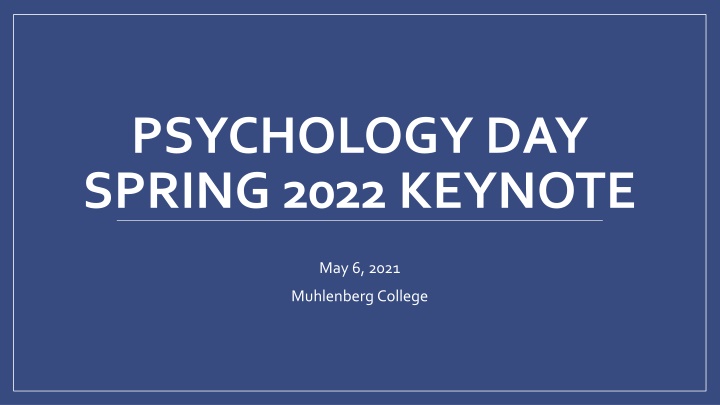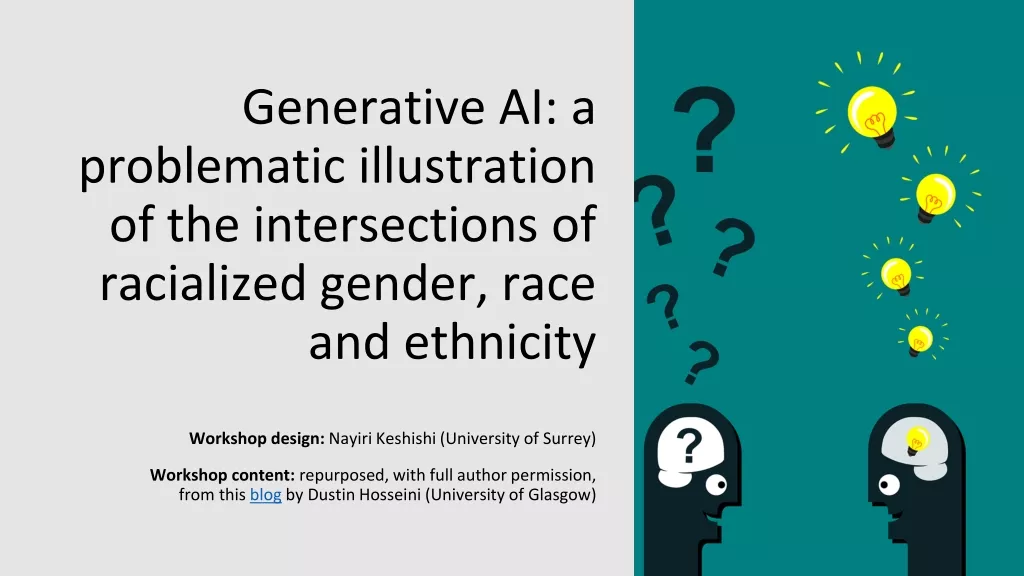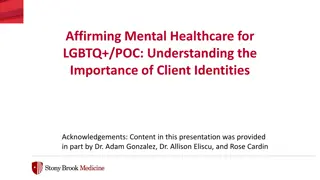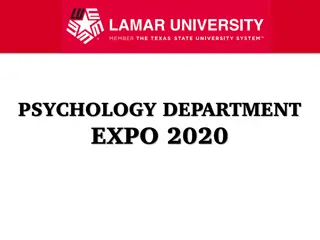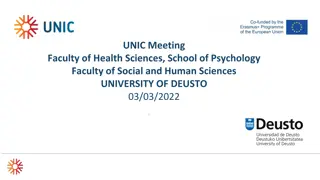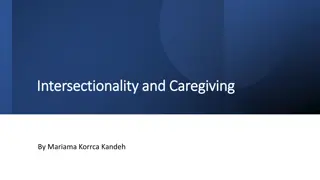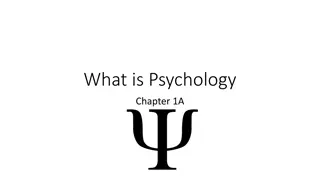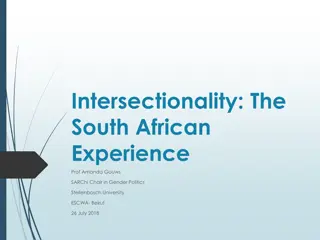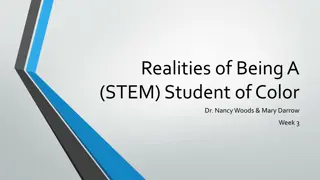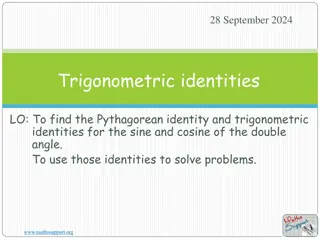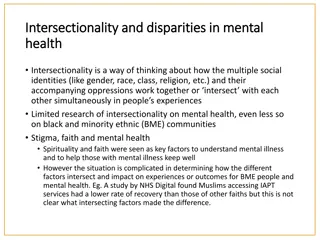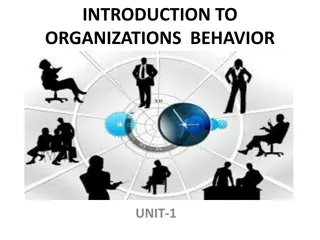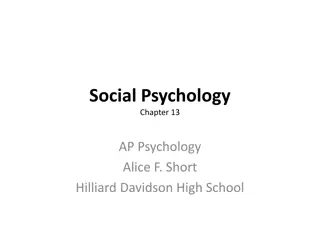Intersectionality in Psychology: Unique Experiences & Social Identities
Intersectionality in psychology delves into how social identities overlap, shaping individuals' vulnerabilities to discrimination and violence. This concept, coined by Kimberlé Crenshaw, emphasizes the interplay of factors like class, race, disability, and age in defining experiences. The theoretical framework argues that identities are not simply additive, but interact in unique ways, profoundly influenced by power dynamics. Research studies on stereotype content and perceived threat further illuminate the intricate connections between social categories. Through case studies and participant analyses, the complexities of intersectionality come to light, shedding new perspectives on human experiences and societal structures.
Download Presentation

Please find below an Image/Link to download the presentation.
The content on the website is provided AS IS for your information and personal use only. It may not be sold, licensed, or shared on other websites without obtaining consent from the author.If you encounter any issues during the download, it is possible that the publisher has removed the file from their server.
You are allowed to download the files provided on this website for personal or commercial use, subject to the condition that they are used lawfully. All files are the property of their respective owners.
The content on the website is provided AS IS for your information and personal use only. It may not be sold, licensed, or shared on other websites without obtaining consent from the author.
E N D
Presentation Transcript
PSYCHOLOGY DAY SPRING 2022 KEYNOTE May 6, 2021 Muhlenberg College
Hampton University B.A. (Psychology), 2015 Minor in Music University of Kansas Graduate Certificate (Women, Gender and Sexuality Studies), 2018 M.A. (Psychology), 2019 Ph.D. (Psychology), 2021 Muhlenberg College Consortium for Faculty Diversity Postdoctoral Fellow, Psychology (AY 2021-2022) Assistant Professor of Psychology and Africana Studies (Fall 2022)
Intersectionality and Stereotype Content Perceived Threat & Immigration Policy Intergroup Allyship & Coalition Building
What is Intersectionality? Term coined in 1989 by legal scholar and critical race theorist Kimberl Crenshaw Used the metaphor of a traffic intersection to describe how social identities (and related systems of oppression) can overlap and interact making persons who exist at these intersections vulnerable to unique experiences of discrimination and violence It s a way of addressing difference recognising that not all women are the same, or have the same experiences of, for instance, motherhood/ reproduction, that these experiences are affected by factors such as class, race, dis/ability, age etc.
The theoretical framework of intersectionality argues that: Each person belongs to multiple social categories simultaneously and that these categories are mutually constitutive. Group identities based on the intersection of social categories (e.g., being a Black woman) are unique and cannot be understood by simply summing up the attributes of each separate identity Social categories are embedded in power asymmetries that shape social and material life
Study Participants: 487 participants (M =38.1 yrs., 76% White, 86% Heterosexual) Gender: 195 male, 287 female Procedure: Participants were randomly assigned to 1 of 9 conditions (Men, Black men, White men, Gay men, Straight men, Black gay men, White gay men, Black straight men, White straight men) and asked to generate ten (10) cultural stereotypes about their target group.
Study Hypotheses The stereotypes of intersectional groups (e.g. gay Black men) will contain unique attributes that are not represented in the stereotypes of either constituent group i.e. Black men OR gay men (Intersectionality Hypothesis) Intersectional groups with less prototypical constituent elements (Black, gay) will generate more unique attributes than intersectional groups with more prototypical elements (White, straight) (Prototypicality Hypothesis)
Study To code and organize the free responses, we used an inductive method instead of imposing a priori categories (Buss and Craik, 1985; Peplau and Ghavami, 2013) Frequencies for each attribute were based on counting the total number of times each word or phrase in that attribute category was listed across participants assigned to that target group. The content of each group stereotype was defined, a priori, as the 15 most frequently listed attributes
Take home Consistent with the intersectionality hypothesis, all four intersectional groups (Black gay men, White gay men, Black straight men, and White straight men) produced unique attributes that were not present in the stereotype profile of either of their constituent groups. The prototypicality hypothesis was supported in the case of sexual orientation: Black gay men generated more unique stereotype content than Black straight men, and White gay men generated more unique content than White straight men. However, while stereotypes of gay Black men included more unique content than stereotypes of gay White men, stereotypes of straight Black men did not include more unique content than stereotypes of straight White men.
